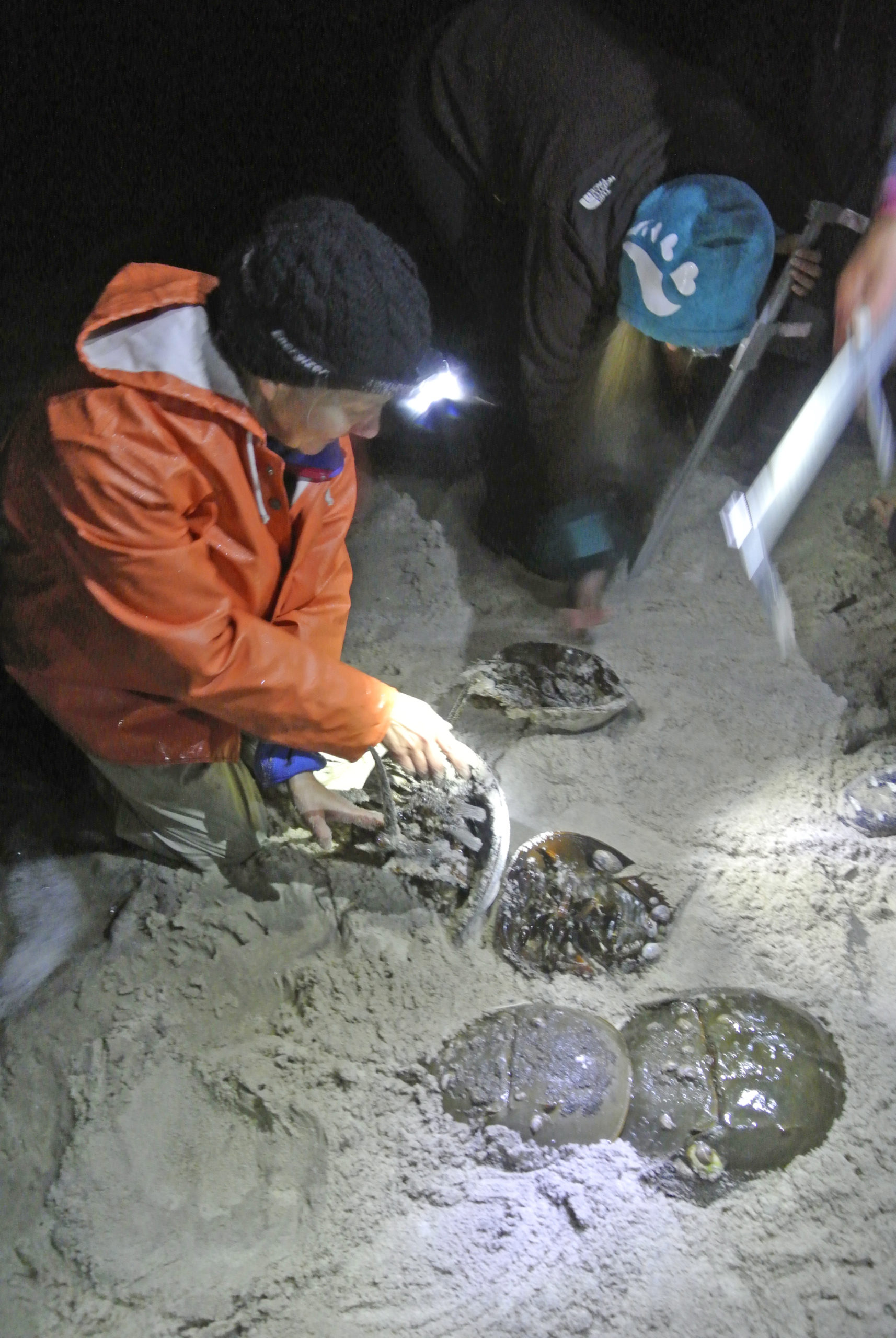
The beleaguered horseshoe crab, a prehistoric holdover species that has survived five mass extinctions over the past 450 million years but faces new threats from global warming, acidic ocean water, pollution, habitat loss, and overharvesting continues to see its numbers decline in Long Island waters, according to an annual survey conducted by the Center for Environmental Research and Coastal Oceans Monitoring at Molloy College.
The survey covers 115 beaches from Brooklyn to Montauk, and this year, 85 percent of those beaches, which have traditionally been visited by horseshoe crabs to lay their eggs from May to August, showed no signs of activity.
“This is a serious concern as it is the worst-case situation for the horseshoe crab on Long Island in the 20 years CERCOM has been studying these living fossils,” said Dr. John T. Tanacredi, a professor of Earth and Environmental Science and director of the college’s CERCOM Field Station.
Aside from their creepy-crawly appearance, horseshoe crabs are highly valuable to mankind. Their baby blue blood contains a protein Limulus Amebocyte Lysate (LAL), that can be used to detect — and trap — bacterial contamination in everything from vaccines to surgical tools.
With pharmaceutical companies frantically trying to bring COVID-19 vaccines to market, LAL, which can cost as much as $60,000 per gallon, will continue to be in high demand, Dr. Tanacredi said.
Along with outright habitat loss or its reduced suitability due to development, Dr. Tanacredi pointed to another threat facing the creatures: the continued harvesting of the crabs by commercial fishermen who use them as bait in the whelk and eel fisheries.
New York fishermen are allowed to harvest up to 150,000 horseshoe crabs per year. They typically take the crabs before they get to shore to breed and lay eggs, a practice Dr. Tanacredi said must stop if the horseshoe crab is going to survive in Long Island waters. Each female lays between 80,000 and 120,000 eggs, the vast majority of which do not survive because they are eaten by migratory shorebirds and other predators.
Dr. Tanacredi has called for a moratorium on the harvesting of horseshoe crabs to give their population a chance to recover. He said he was confident a moratorium would help and pointed out that horseshoe crabs are doing particularly well in Delaware Bay, where harvesting is not allowed. He added that every other state on the East Coast has banned harvesting for bait except for New York.
There were some glimmers of good news in the survey, though. A total of 957 crabs were counted by volunteers during the college’s survey. That’s nearly four times as many as last year, when only 243 crabs were spotted, an all-time low in the 18 years the survey has been conducted. The highest number recorded was in 2011 when 7,908 horseshoe crabs were counted by volunteers.
Those volunteers begin serving as sentinels at assigned beaches from late April until early August to monitor the horseshoe crabs’ arrival. Dr. Tanacredi said the crabs show “site fidelity,” meaning they return to the same beaches year after year, so the downward trend is not a function of them moving to new sites.
Despite the temporary uptick, Dr. Tanacredi said the numbers remained far too low to sustain the species locally, and he called on the state Department of Environmental Conservation to take the necessary steps to protect horseshoe crabs here. He added that Molloy’s research supports the findings of the Atlantic States Marine Fisheries Commission, which has also expressed concern about the species’ viability.
Horseshoe crabs are a delicacy in many Asian countries, with the result that other species of the animals have been nearly wiped out in that part of the world, Dr. Tanacredi said.
He added that the crabs also face the pressure of being so valuable in the biomedical field, where they are kept alive after capture and a portion of their blood withdrawn to be used for LAL.
“Extinction is forever,” Dr. Tanacredi said, “and these animals are in trouble all over the world.”